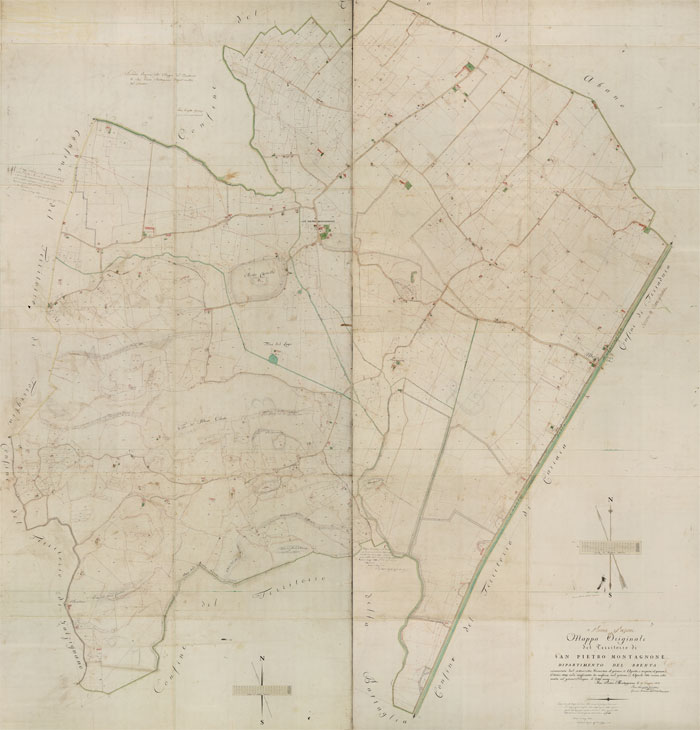CATASTO NAPOLEONICO – MAPPA DEL TERRITORIO DI SAN PIETRO MONTAGNONE, DIPARTIMENTO DEL BRENTA (1810)
Pen-and-ink watercolour drawing on paper – n.2: mm 1330 x 2790 – ASVe, Comune censuario di San Pietro Montagnone (Montegrotto Terme). Censo stabile, Mappe Napoleoniche, mappa n. 202
The Napoleonic Land Register, instrument devised by the French government for fiscal purposes, provided a first and detailed representation of the territorial organization: the map is based on accurate surveys, conducted by means of a vast and careful site measuring, while the drawing is done following officially approved scales.
The Napoleonic map representing the area of San Pietro Montagnone is made up of two parts, and faithfully depicts the whole registrable surface of the township: the numbers locate the cadastral parcels, the letters locate the sacred places and the cemeteries.
A “sommarione” is attached to the map: in this register, each parcel – named with the number reported in the map – relates the name or toponym of the place, the owner, the designation of the area (meadow, farmland, wood, building area), the size measured in “pertiche censuarie” (1 pertica censuaria = 1000 m²).
The maps of the Napoleonic Land Register are a precious instrument for the study of the territory, seeing that they represent the area just after the end of the Venetian rule and before the radical changes of the 20th century.
La riproduzione della mappa sottostante è stata eseguita dalla Sezione di fotoriproduzione dell’Archivio di Stato di Venezia ed è stata pubblicata con atto di concessione n. 51/2013 e Prot. n. 5802 del 01.08.2014.
La riproduzione dell’immagine è vietata.

CARTOGRAPHIC DOSSIER n°5
Carta militare topografico-geometrica del Ducato di Venezia (1798 – 1805)…
CARTOGRAPHIC DOSSIER n°7
Mappa del Comune censuario di San Pietro Montagnone – Catasto austriaco (1834)…





